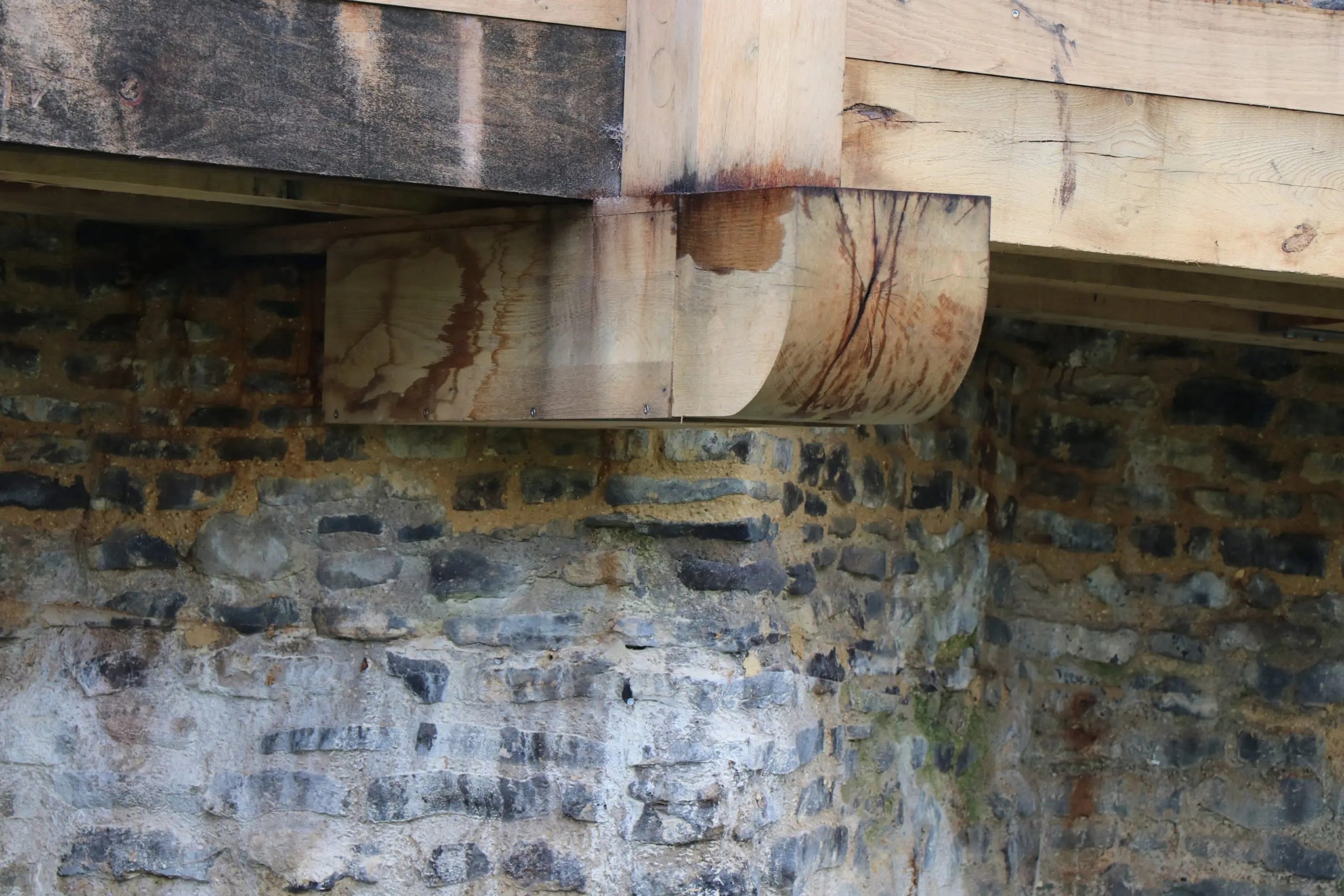
Medieval Bridge Restoration – Beams & Structures
Heritage work on 13th century Tilford Bridge
The medieval Tilford East Bridge links Rushmoor and Tilford but was closed from January 2017 for essential restoration works following a car crash, becoming passable only on foot.
The Tilford ford is believed to have been created in 1128 AD by the monks of Waverley Abbey; the bridge itself, one of England's last packhorse bridges, is said to have been constructed in 1286 AD. As the patrons of this iconic historical monument, Surrey County Council stepped in and set about organising restoration works.
As timber merchants and oak specialists with plenty of heritage restoration experience and full on-site facilities to manage the scope of the project, W L West were recommended for the job.
We were approached to become involved in the restoration project early in 2019. Producing timber supplies for Tilford Bridge's restoration was a huge project and we wanted to ensure our repairs would last long into the future while avoiding repetition of the bridge's previous problems. Working with Sarum Hardwoods, the appointed contractors, we sat down with Surrey County Council to look at previous specifications for the bridge and studied evidence of its behaviour over time. We quickly identified certain changes that needed to occur, due to challenges posed by certain structural elements.
We had to bear in mind the unique nature and circumference of Tilford Bridge: the overall convex shape stretches in such a way that all sections are of irregular lengths. This meant the new parapets and handrails had to be made bespoke to fit, following a new set of specifications we had designed beforehand.
All the bracing, mortise and tenons and cutting of the main beams were done in our workshops. Manufacturing the components ourselves, following the client's specifications, meant Sarum Hardwoods were able to marry in the steel inserts with the timber with a greater level of accuracy. We ended up supplying 18 cubic metres of fresh sawn oak and 10 cubic metres of well air-dried oak boules.
This was a challenging and complex undertaking, but we love getting involved in heritage projects, and there was huge satisfaction in seeing the bridge completed and re-opened to traffic in late 2020.




